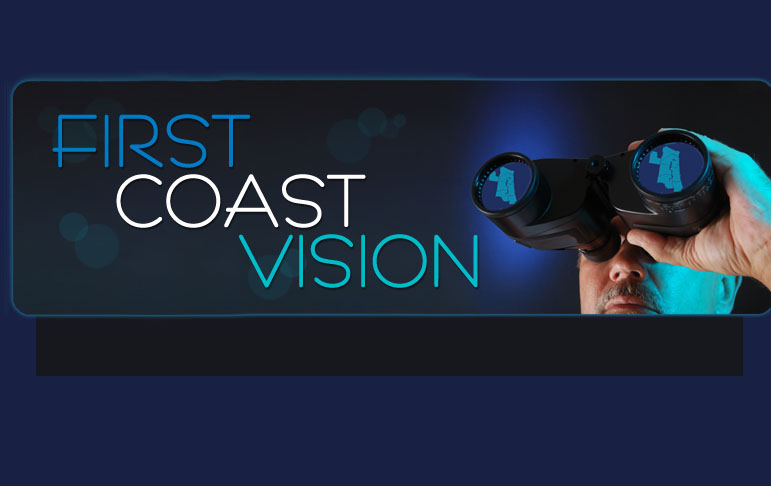
First Coast Vision
Your chance to choose the Future
On May 21, 2009, 300 First Coast leaders from the non-government sector, business and government participated in a regional visioning exercise called Reality Check First Coast. They looked at current growth trends, considered their hopes and dreams for the First Coast Region, and used LEGO® bricks and yarn to build their vision for future growth for the next 50 years. Their visions fell into four general patterns.
When the patterns they created were compared to the trend of how we have been growing, we learned something exciting. All of the patterns they created used far less land than what would be required to grow as we have been growing. All of the patterns placed people and jobs in all of the counties of the Region, allowing for a balance that could reduce commute times in the future. All of the patterns increased density in existing developed areas, which could lower costs for new infrastructure and make transit a viable option in the Region. Even though the visions were different, the bottom line is the same: Choosing how we grow has the potential to save us and future residents of the First Coast Region time and money, and we can plan our future to give more choices to ourselves, our children, and new residents and businesses.
After Reality Check First Coast, the visioning exercise was repeated in each County as County Checks, and with young people only, as Generation Check. Ultimately, about 500 people participated. Each was asked to think about where to grow, what principles should guide our growth, what barriers would need to be overcome to realize a vision, and what solutions could work for our Region. The Regional Community Institute (RCI), a non-profit organization affiliated with the Northeast Florida Regional Council, is now building on the work of Reality Check First Coast, County Checks and Generation Check to create First Coast Vision. First Coast Vision is a vision for growth in the Northeast Florida Region for the next fifty years.
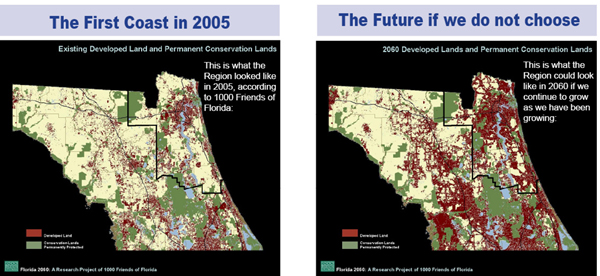

Reality Check First Coast used LEGO ® bricks to create growth patterns, so the 2060 image was built in LEGO ® bricks for comparison. If we continue to grow in a sprawl pattern, this is where we would expect jobs and people to be in 2060.

Now consider new ways we could grow, using examples of LEGO® brick growth patterns created by the participants in Reality Check First Coast, County Checks and Generation Check. Each is just an example of where new growth might go in Northeast Florida. Each shows the same amount of new jobs and people.
Each of the growth patterns can help us choose a future that reflects our vision, while the trend simply allows the future to happen to us. The growth pattern will affect how the residents of Northeast Florida live 50 years from now. Here are some general assumptions about how growth patterns might make a difference to residents:

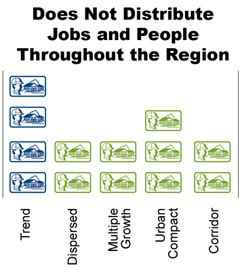
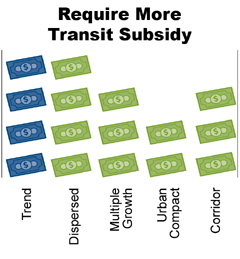
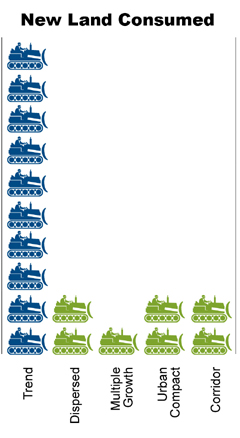
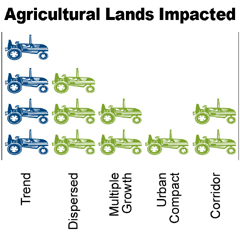
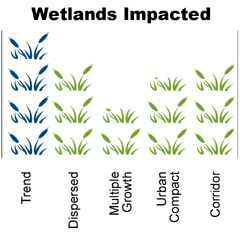
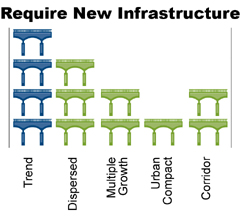
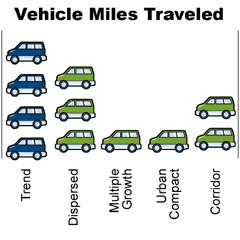
The Regional Community Institute (RCI) of Northeast Florida, with the support of Region First 2060, the partnership that put on Reality Check First Coast, and the Northeast Florida Regional Council, wants all of the residents of the seven county (Baker, Clay, Duval, Flagler, Nassau, Putnam and St. Johns) Region to know that we have important choices to make: What should the First Coast be like in 2060? What principles should we use to guide us to our vision? What do we need to do to get there? With the help of input from all seven counties the answers to these questions has become First Coast Vision.
First Coast Vision, a vision for growth in the Northeast Florida Region for the next fifty years, has been provided to the Northeast Florida Regional Council, for use as they update the Strategic Regional Policy Plan to address the future of affordable housing, economic development, emergency preparedness, health and human services, natural resources, and transportation.
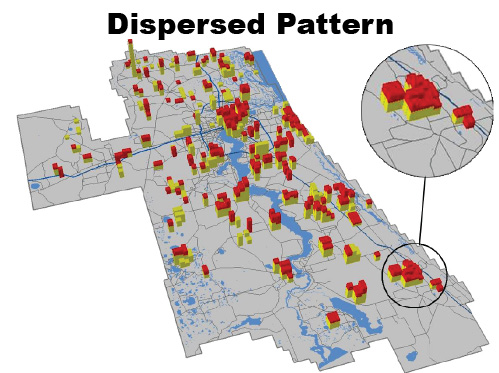
If we grow in this pattern, we might continue to have low residential densities and could spread jobs throughout the Region.
If we grow like this, jobs and people would be closer together and we might have shorter commutes and more options for travel.
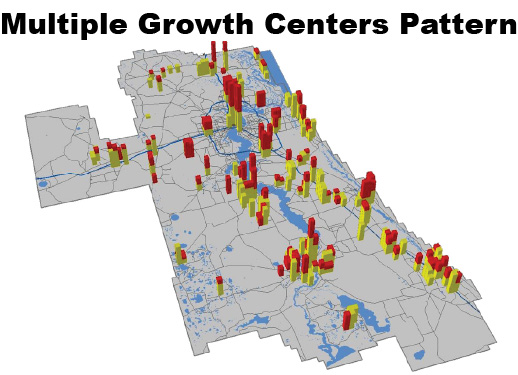
If we grow along corridors, we might use a car or transit to get to a corridor, where we could connect with an efficient transit network.
If we concentrate new growth in existing urban areas, we make good use of our existing infrastructure.
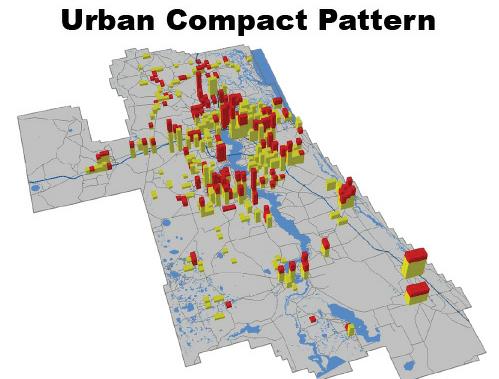
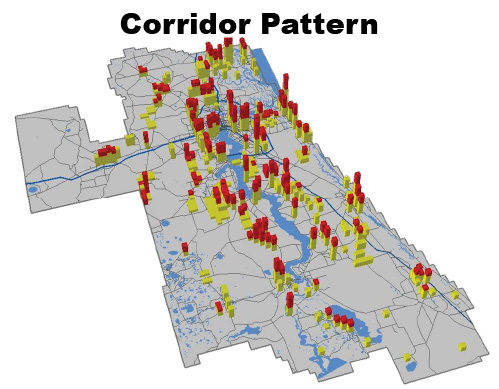
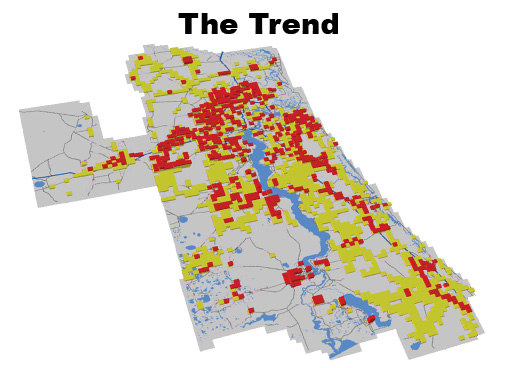
Jobs are shown in RED
and people in YELLOW
In comparing the patterns, NEFRC staff made broad generalizations, after reviewing much that has been written about how growth patterns compare. Click here if you want to read more on the subject. (link)
If you have questions regarding the First Coast Vision
or want to get involved, contact:
Margo Moehring, Executive Director
Regional Community Institute of Northeast Florida, Inc.
6850 Belfort Oaks Place
Jacksonville, Florida, 32216
Telephone: 904 279 0885 X 161
E-mail: mmoehring@nefrc.org
First Coast Vision is now available. See the link below.
